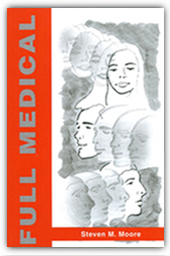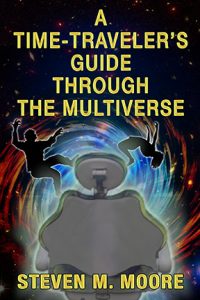Sci-fi as extrapolation…
Wednesday, September 20th, 2023The general public often misunderstands the progress of science, at best buying into the standard explanation that a theory is constructed to explain a lot of data and then tested over time as more data accumulates to prove the theory right or wrong, ad infinitum. That’s the so-called “scientific method,” and any child in a basic science course might hear or read that much without really experiencing it or understand what it means.
I suppose that explanation is okay as far as it goes, but it doesn’t consider the role of imagination, even among scientists—children are brainwashed to believe that advances just flow from cold, experimental facts, if that. The reality is that a theory originates because one or more imaginative people look at data and say, “How do I explain this?”, and then go about imagining an explanation. (Some people polish that up by calling it “creative thinking,” but imagination is the better word!) Same for new data especially if it contradicts aspects of an old theory.
We should perhaps consider sci-fi as an important way to use imagination as an effective tool to stimulate all creative thinking, a filter for determining what might be possible, which is why so many scientists (or ex-scientists who are still thinking like scientists) read (and even write) good sci-fi. Extrapolation of current science, often far into the future, is what makes that tool so effective. (I’m excluding fantasy and space-opera authors here, especially screenwriters, who rarely worry about contradicting even current science: “Full stop, Mr. Sulu!” or “Warp 9, Mr. Sulu!” are examples of their foolishness; ninja-like warriors fighting with light sabers are others; time-travel romances and cannibalistic ETs; etc., etc. In fact, most of what Margaret Atwood called “speculative fiction” is excluded!) The sci-fi author has to be prepared to win a few and lose a few, though. (Phasers were very much like today’s smart phones; but the transporter is beyond the impossible, albeit necessary for screenwriting purposes in Star Trek.)
 I began writing the “Chaos Chronicles” trilogy, my version of Asimov’s Foundation trilogy, long before my first novel Full Medical was published. (All three novels of that trilogy are bundled now—see below.) Unlike my hero Asimov, who basically swept FTL-travel and ETs under the rug (the first simply is accomplished by “jumps through hyperspace” and is never explained beyond that; the lack of the second is eventually explained in the extended Foundation series as a trick performed by the time-travelers in End of Eternity, but time travel is never explained), as a physicist I worked harder on my extrapolations than Asimov the biochemist wanted to do, at least for the FTL-travel and certainly for ETs. (The ETs might eventually be explained by congressional inquiries actually studying UFO phenomena! One should probably ignore the “mummified ETs” in Peru that excite the Mexican government, and certainly all the tales of abduction and seduction UFO nuts prattle about.)
I began writing the “Chaos Chronicles” trilogy, my version of Asimov’s Foundation trilogy, long before my first novel Full Medical was published. (All three novels of that trilogy are bundled now—see below.) Unlike my hero Asimov, who basically swept FTL-travel and ETs under the rug (the first simply is accomplished by “jumps through hyperspace” and is never explained beyond that; the lack of the second is eventually explained in the extended Foundation series as a trick performed by the time-travelers in End of Eternity, but time travel is never explained), as a physicist I worked harder on my extrapolations than Asimov the biochemist wanted to do, at least for the FTL-travel and certainly for ETs. (The ETs might eventually be explained by congressional inquiries actually studying UFO phenomena! One should probably ignore the “mummified ETs” in Peru that excite the Mexican government, and certainly all the tales of abduction and seduction UFO nuts prattle about.)
 A few weeks ago in this blog, I wrote an obit for an old professor of mine, James Hartle. (No, he wasn’t any more an ET than I am, but he sure was a hell of lot more intelligent.) Some of his work was with Hawking, and that motivated me when writing my sci-fi trilogy to consider what’s now called the multiverse, the idea that our Universe is only one among many quantum states of an infinite collection of universes. (Much later, this was the basis for my novel A Time Traveler’s Guide through the Multiverse, a sci-fi rom-com.) I also knew something about zero-point energy. In standard quantum electrodynamics, that’s what allows a froth of virtual photons to give spin to the electron, for example, and the idea has been extended to the entire zoo of elementary particles, including the mysterious Higgs particle, that are, after all, just quantum states themselves (perhaps of only one particle?). In other words, there could be virtual universes as well.
A few weeks ago in this blog, I wrote an obit for an old professor of mine, James Hartle. (No, he wasn’t any more an ET than I am, but he sure was a hell of lot more intelligent.) Some of his work was with Hawking, and that motivated me when writing my sci-fi trilogy to consider what’s now called the multiverse, the idea that our Universe is only one among many quantum states of an infinite collection of universes. (Much later, this was the basis for my novel A Time Traveler’s Guide through the Multiverse, a sci-fi rom-com.) I also knew something about zero-point energy. In standard quantum electrodynamics, that’s what allows a froth of virtual photons to give spin to the electron, for example, and the idea has been extended to the entire zoo of elementary particles, including the mysterious Higgs particle, that are, after all, just quantum states themselves (perhaps of only one particle?). In other words, there could be virtual universes as well.
